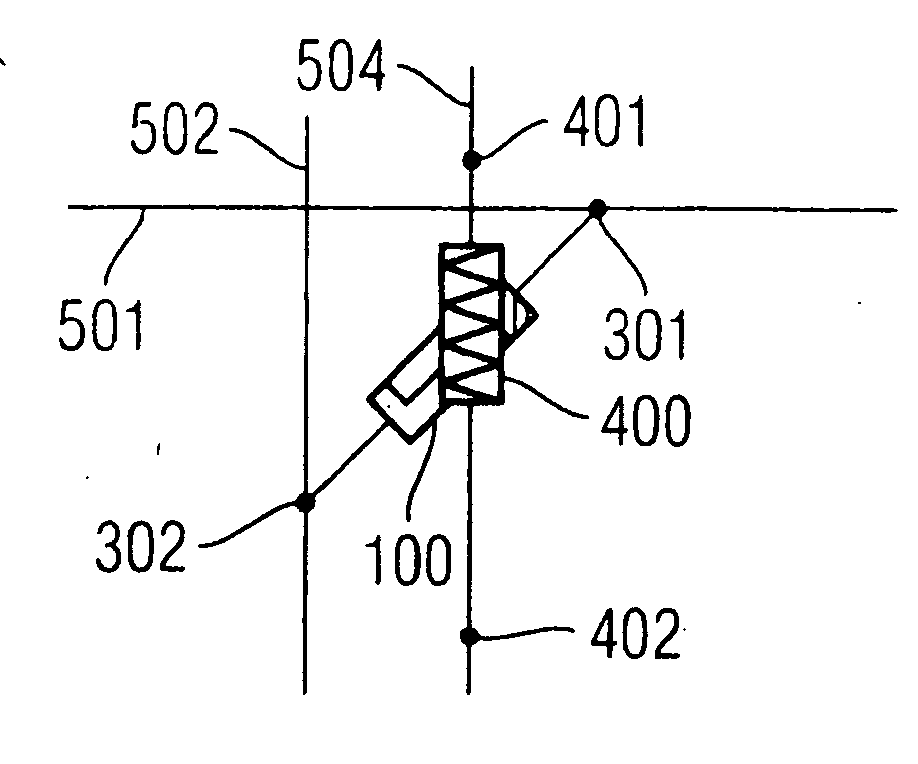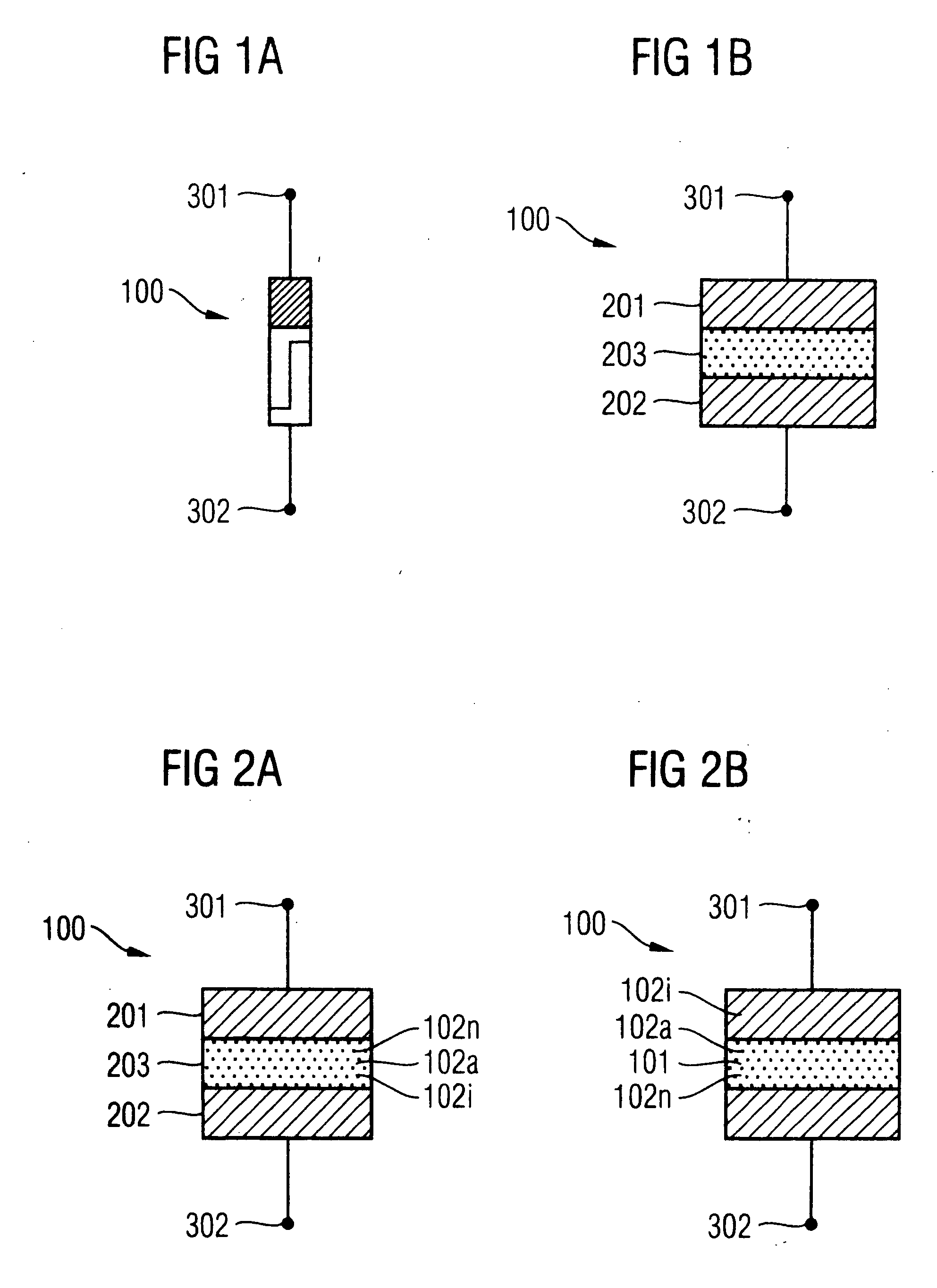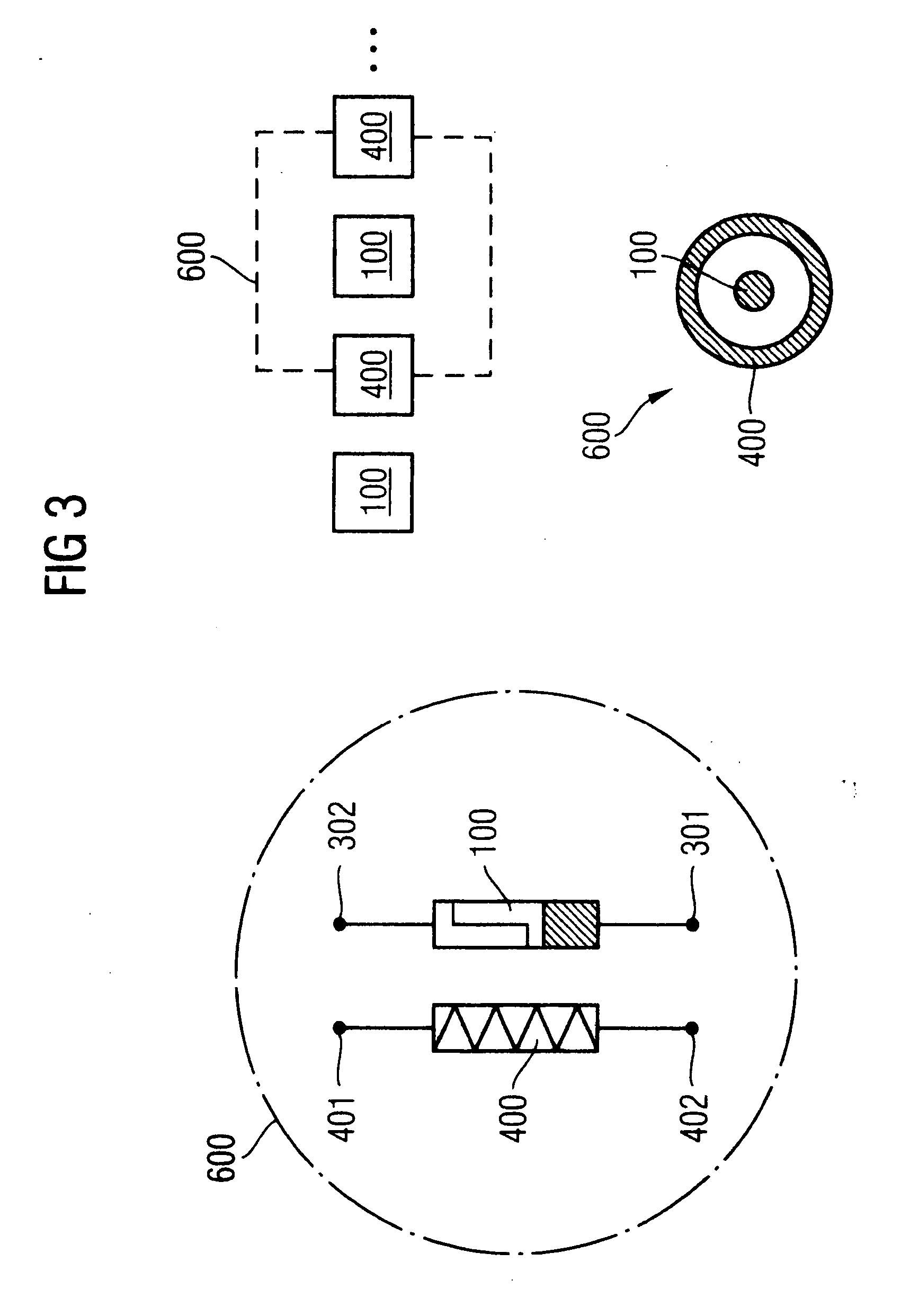Method and device for driving solid electrolyte cells
- Summary
- Abstract
- Description
- Claims
- Application Information
AI Technical Summary
Benefits of technology
Problems solved by technology
Method used
Image
Examples
Embodiment Construction
[0049] In the figures, identical reference symbols designate identical or functionally identical components or steps.
[0050] A TACB (thermally assisted conductive bridging) cell according to the invention is illustrated in FIGS. 1(a) and 1(b). In this case, such a TACB cell, which is designated hereinafter by the reference symbol 600, essentially has two terminal units, that is to say a first terminal unit 301 and a second terminal unit 302 for the switching element 100. While FIG. 1(a) shows a schematic circuit symbol of such a switching element 100, FIG. 1(b) schematically illustrates the construction of the switching element 100. The switching element 100 essentially comprises a first electrode unit 201 and a second electrode unit 202, the first electrode unit 201 being connected to the first switching terminal unit 301, while the second electrode unit 202 is connected to the second switching terminal unit 302.
[0051] As will be explained below with reference to FIG. 3, the elect...
PUM
 Login to View More
Login to View More Abstract
Description
Claims
Application Information
 Login to View More
Login to View More - R&D
- Intellectual Property
- Life Sciences
- Materials
- Tech Scout
- Unparalleled Data Quality
- Higher Quality Content
- 60% Fewer Hallucinations
Browse by: Latest US Patents, China's latest patents, Technical Efficacy Thesaurus, Application Domain, Technology Topic, Popular Technical Reports.
© 2025 PatSnap. All rights reserved.Legal|Privacy policy|Modern Slavery Act Transparency Statement|Sitemap|About US| Contact US: help@patsnap.com



